By the end of the 18th century 20 per cent of the population of Carrick-on-Suir was engaged in milling, weaving and related industries. The largest mill in the country was the Malcomson cotton mill, eight miles east of the town, which employed 1,500 people and was the largest factory of its kind in Europe. By 1840 the mill was bleaching, dyeing, spinning and weaving material and exporting all over the world. By the mid 1800s there were seven mills in the vicinity of Carrick-on-Suir, with three in a valley that was to become known as Millvale.
As mills flourished, millers’ houses began to pop up in the area to accommodate workers and their families. Millvale, a lovely 156sq m (1,679sq ft) old Georgian pile, which has later Victorian additions, is home to Owen O’Shaughnessy for the past 22 years. With a background in horticulture and having worked with people with disabilities using horticulture as rehabilitation, O’Shaughnessy says he fell for the property as “it really has all the elements. There is a wood with mature native trees, two watercourses and favourable land for gardening”.
With a river, stream and waterfall, besides the aesthetic beauty of the place – which local trout and herons also appreciate – there is an opportunity for new owners to generate some electricity. “I bought the place from a German couple, who had lots of research done on generating electricity from the steep gradient of the stream, with the use of micro-hydro turbines.”
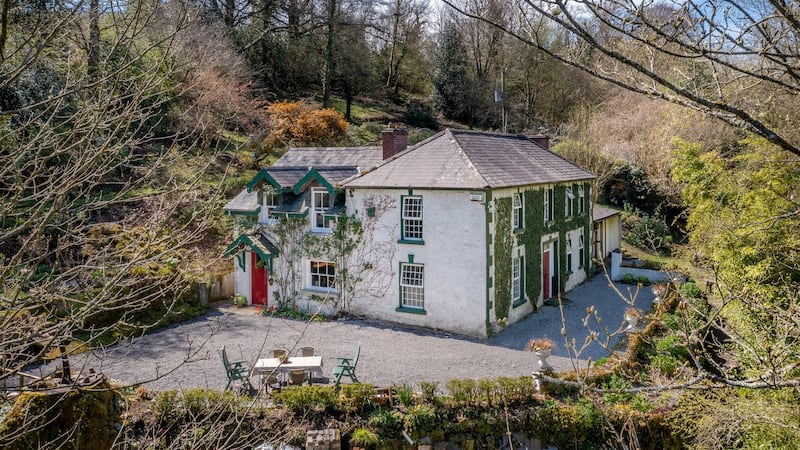
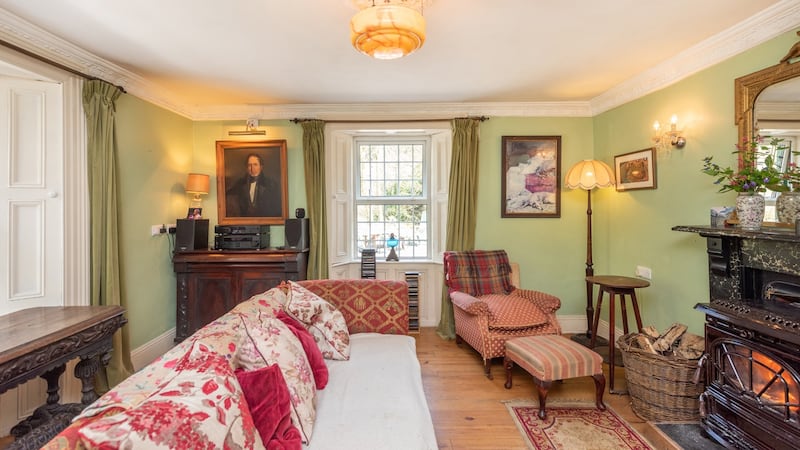
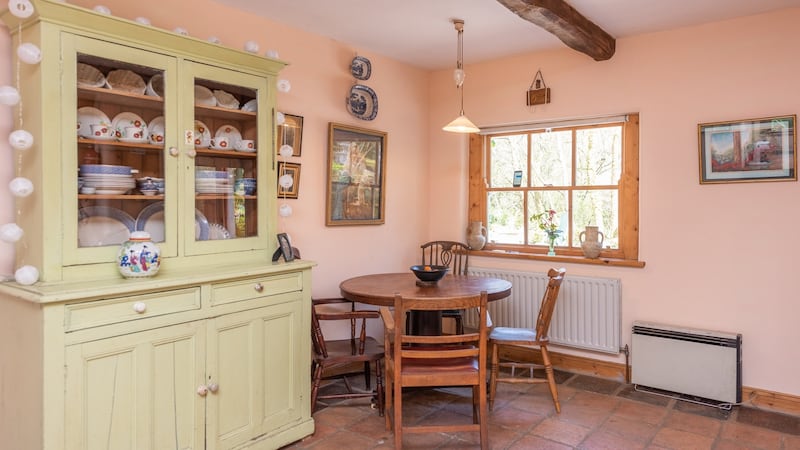
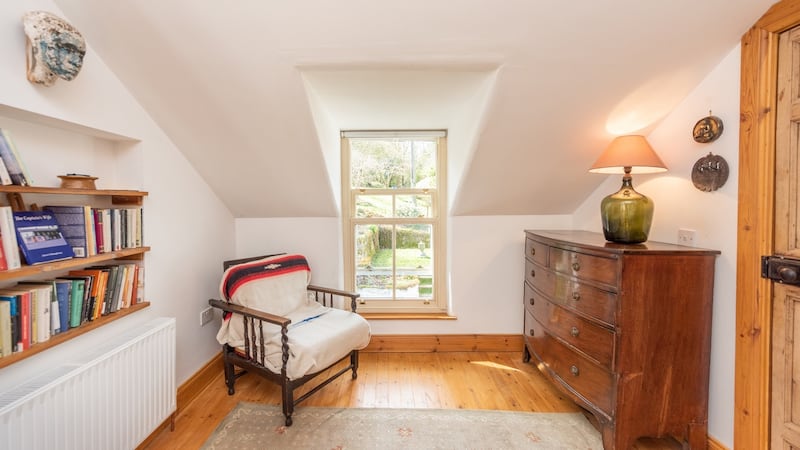
This can be a simple form of renewable energy if you have water flowing through a property. O’Shaughnessy never took it any further, but it could be a plus for new owners considering the rising costs of electricity, oil and gas.
When he purchased the three-bedroom house (there is a further room, formerly a kitchen, at garden level, that could be easily repurposed as a fourth bedroom) he set about upgrading it. “I thought it was associated with a Victorian grain mill but slowly, as we dug out all the floors, by examining the old foundations and floorboards, along with the slates, we discovered that part of the property dated from the late 1700s.” He installed a damp-proof membrane, insulation and underfloor heating pipes. These have not yet been used as the house currently runs on a solid fuel stove and radiators that were installed in 2012.
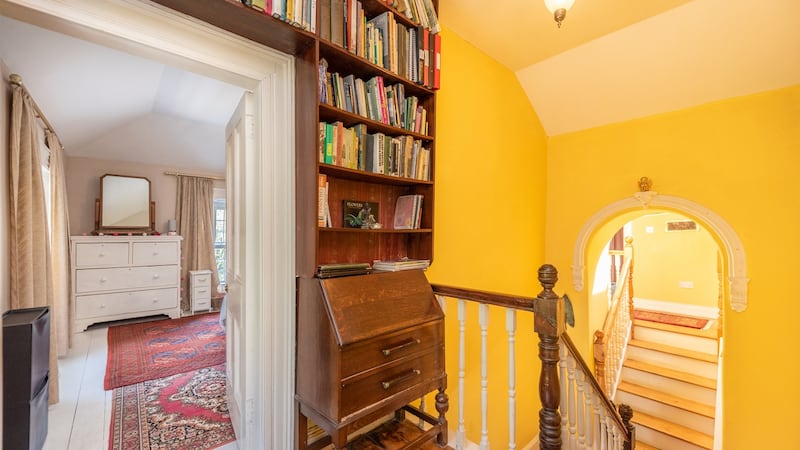
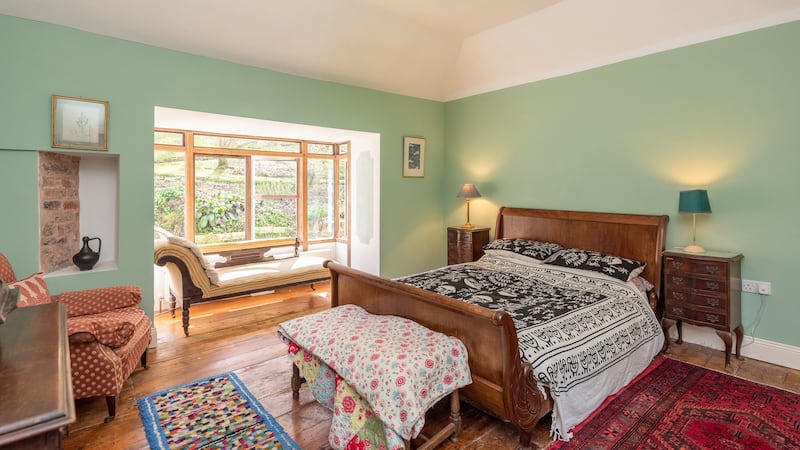
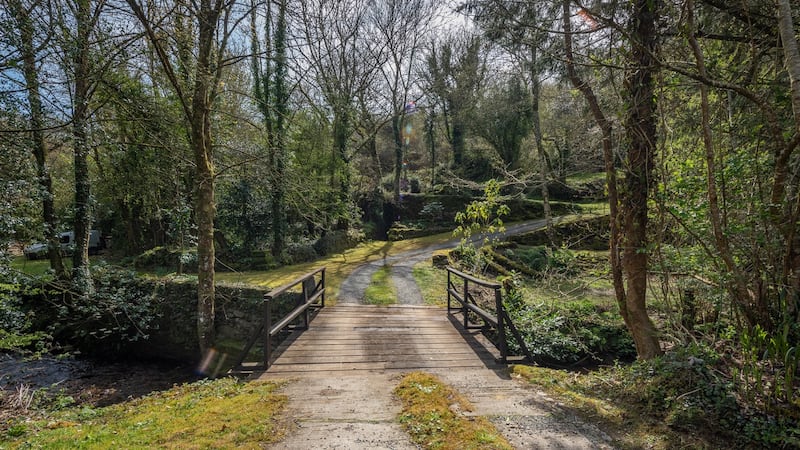
It lies on three acres of charming, if not magical, grounds. Private old deciduous woodland is something of a rarity, and normally the preserve of very grand houses with even grander asking prices. But here the charming property on lovely gardens is seeking €375,000 through Liberty Blue Estate Agents. The old kitchen will need to be renovated and new owners will want to address the Ber of F. However, with the opportunity to generate power from the stream, and to use it as a geothermal heat exchange for the underfloor heating, the property could be attractive to someone who wants to live surrounded by nature.
The house has three bedrooms with the option of a fourth in the old kitchen downstairs, which could also work as a second reception room. A lovely drawing room at garden level is dual aspect – as are most of the rooms in this house – and lies beside a now renovated pantry and eat-in kitchen.








